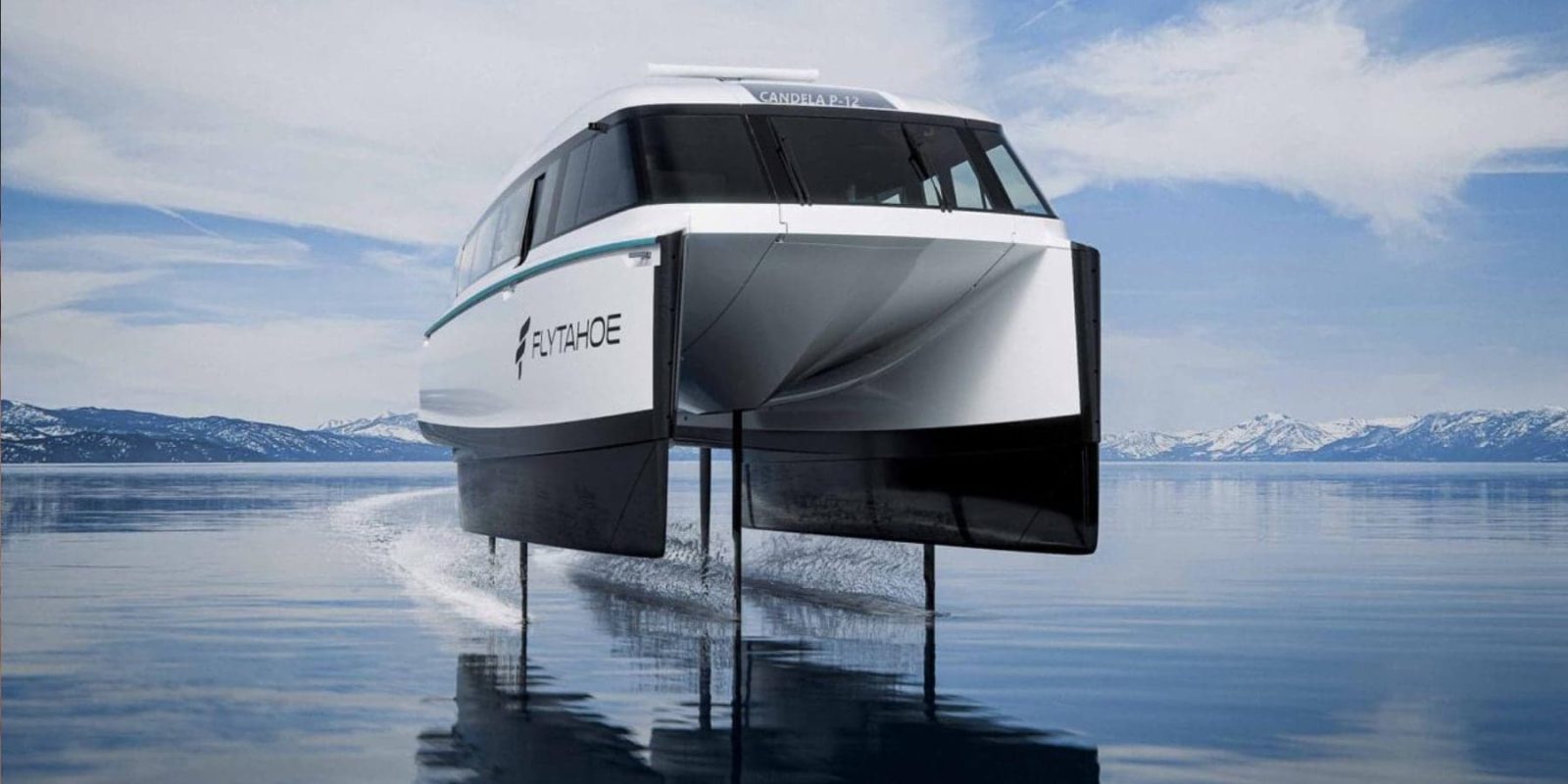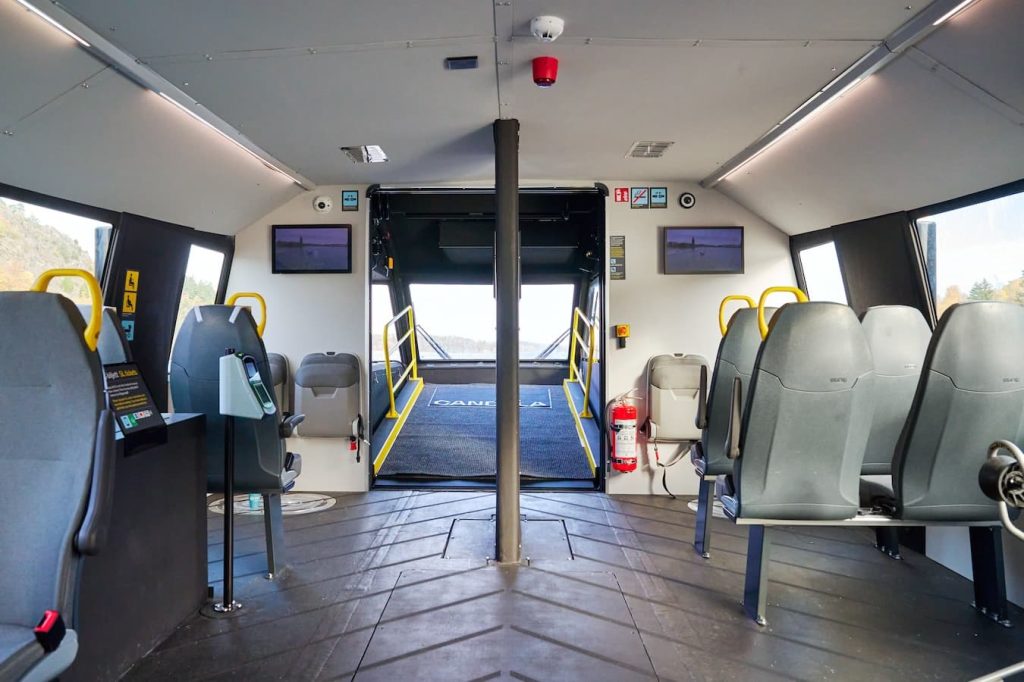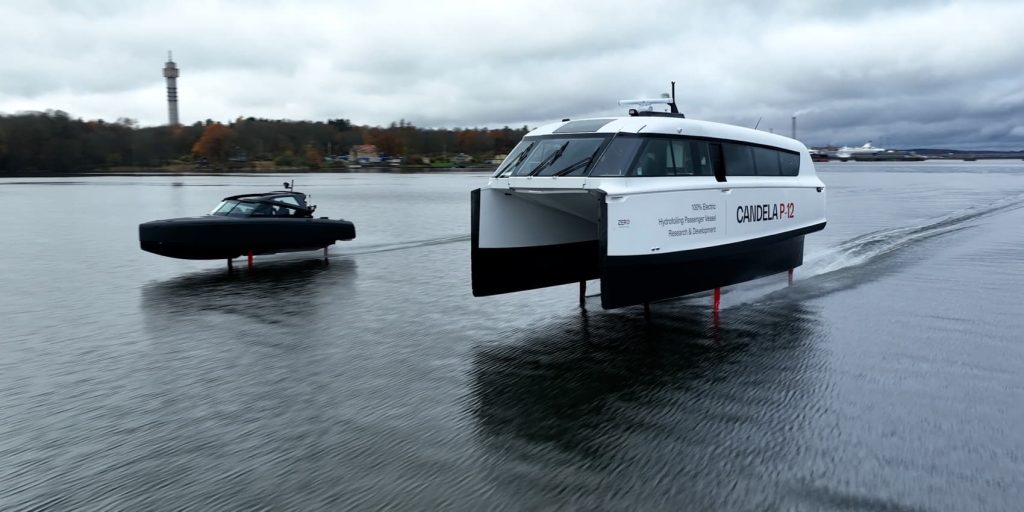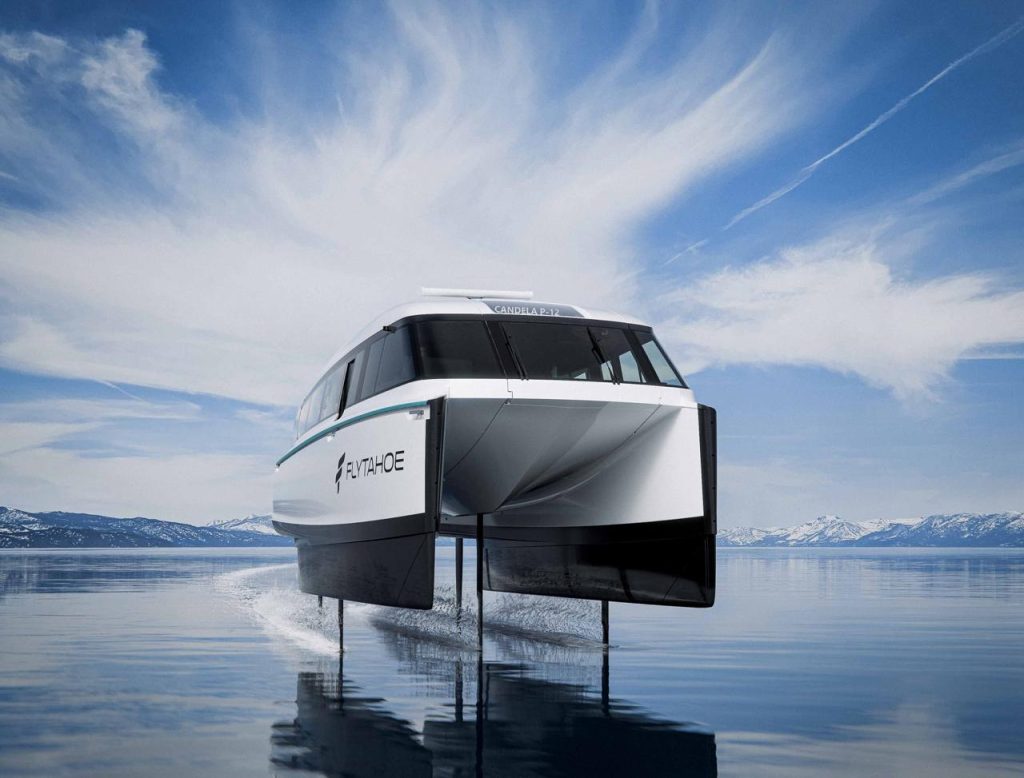
Candela, the Swedish electric boat maker known for its hydrofoil recreational boats and commercial ferries, is grabbing headlines yet again. This time the company is announcing a new C-series funding round and the first P-12 electric ferry headed to the US.
The P-12 is the company’s first operational hydrofoil electric ferry, and it builds upon the success of the C-7 and C-8 recreational speedboats.
All three employ Candela’s sophisticated computer-controlled hydrofoil technology that allows the boats to quite literally fly several feet above the water. Traveling at 25 knots (30 mph), the P-12 is the fastest electric ferry in operation, all while using a fraction of the same energy.
The hydrofoil flight results in a much smoother ride and dramatically improved efficiency. The fast-charging electric boats can thus carry much smaller batteries, making them lighter and more cost-effective. They can then quickly recharge at the dock in a matter of minutes.
We recently saw the first P-12 enter service as a commercial ferry in Stockholm, and now Lake Tahoe is getting into the fly electric ferry business as well.

The P12 hydrofoiling ferry will reduce travel times for Tahoe locals and visitors, providing a much-needed north-south connection across the lake, while also helping to cut emissions and mitigate road sediment that threatens the lake’s famous cobalt-blue clarity.
Lake Tahoe boasts over 15 million outdoor enthusiasts year-round, which has often led to severe road, especially during the winter months. The implementation of a fast and efficient new electric ferry will help avoid long car lines from snow-induced road closures, as well as grid-lock traffic during the summer months of popular biking and hiking destinations.
A local company, FlyTahoe, will offer a new 30-minute cross-lake ferry service, cutting the travel time in half compared to the daily 20,000 car trips along the same route.
In the winter, that same trip can often take over two hours due to heavy snowfall and road limitations. FlyTahoe will create a vital link to the 14 world-class ski resorts encircling the lake, making it an ideal option for both tourists and locals.
“It’s ironic that while millions, myself included, drive around Lake Tahoe to admire its beauty, the road sediment we generate contributes to the largest threat to the lake’s famous cobalt blue clarity. Our service will provide a faster transport than cars or buses, while keeping Tahoe blue,” says Ryan Meinzer, Founder & CEO of FlyTahoe.

Simultaneously, Candela is also celebrating another major milestone back home in Sweden, announcing an additional US $14M raised in its Series C round. That puts Candela’s total secured funding in 2024 at over $40 million. The investment will enable Candela to meet the soaring demand for its groundbreaking zero-emission vessels as it ramps up production of its various models now in service around the world.
“This is the dawn of a zero-emission revival in waterborne transportation,” says Gustav Hasselskog, Candela’s founder and CEO.
The new $14 million investment is led by SEB Private Equity, a global Private Equity investor, with additional participation of existing investors EQT Ventures and KanDela AB.
“This investment, made during a challenging time for many companies, is a testament to Candela’s technology and its unique ability to solve the pressing issue of decarbonizing transport,” added Hasselskog.

